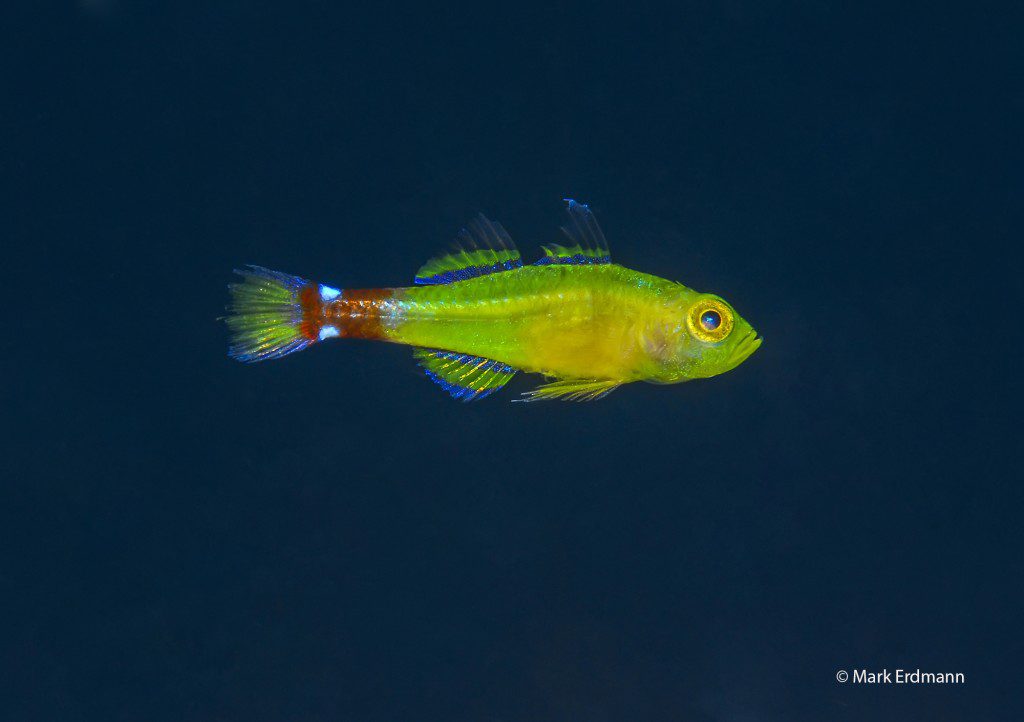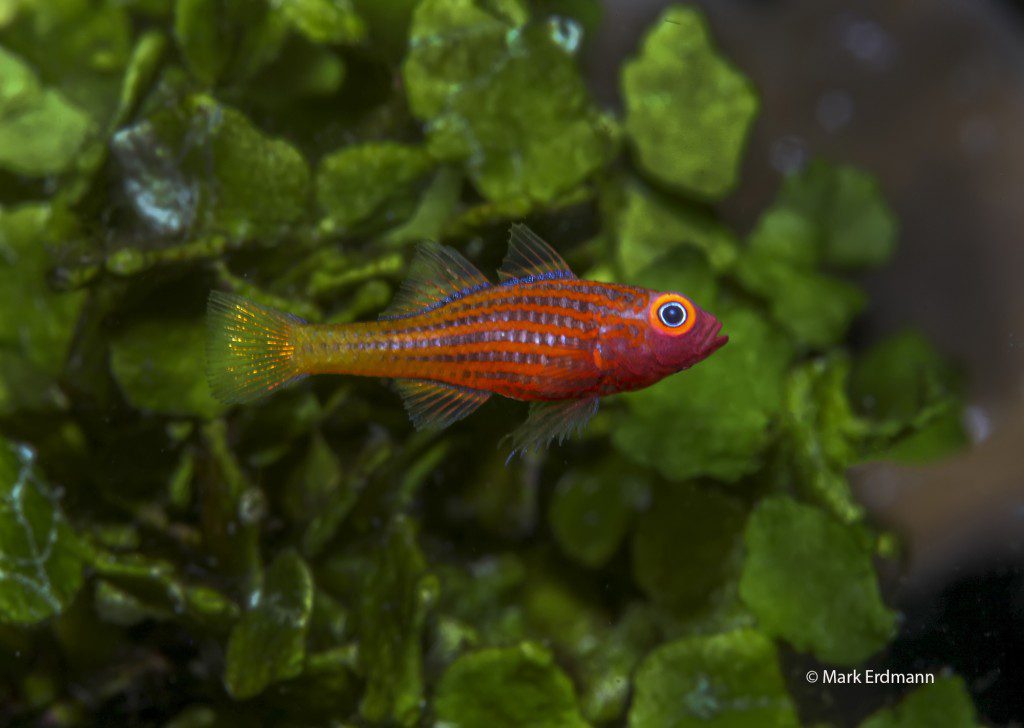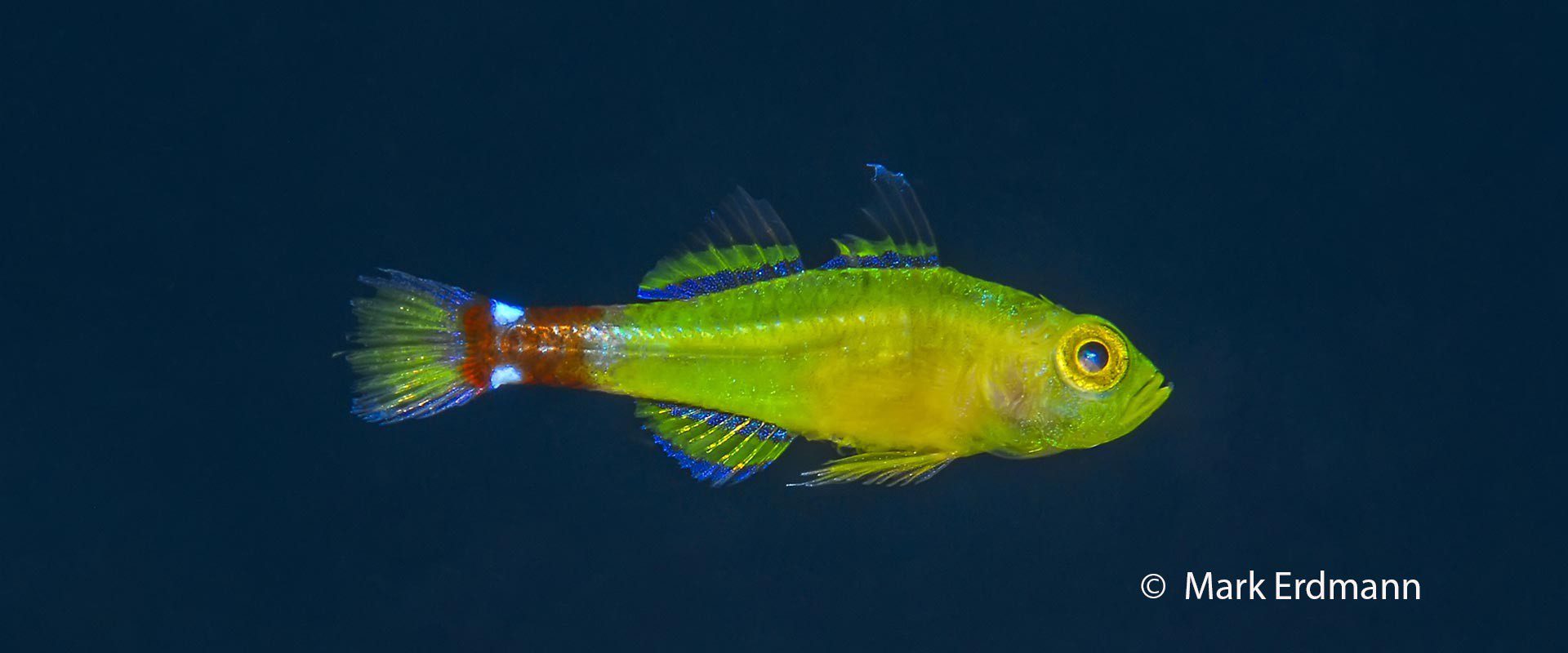New pygmy gobies from the Bird’s Head bring fish species count to 1721 species! by Mark Erdmann
New pygmy gobies from the Bird’s Head bring fish species count to 1721 species!
By Mark Erdmann
A recent paper published by Rick Winterbottom (Royal Ontario Museum), Dita Cahyani (Udayana University/Indonesian Biodiversity Research Center) and Mark Erdmann (CI) describes three colorful new species of pygmy goby in the genus Trimma from Indonesia, with two of these found commonly in the Bird’s Head.

Trimma meranyx is found only on deep reefs below 45m, and has a unique color pattern of overall yellow with a reddish-black tail base on which there are two white spots. Its scientific name comes from the Greek words “mera” (day) and “nyx” (night) –
a fanciful name by the authors referring to the “double sun in the black night” on the tail base. Who says fish scientists have no imagination? This species has been encountered at various deep reefs in Raja Ampat, Kaimana and FakFak. It is also known from Vanuatu, Milne Bay, and Lembeh Strait.

Trimma pajama is another playful name given by the authors to a beautifully colored pygmy goby with red “pajama stripes” down its side. This new species is much more accessible to the general diving public, being found in depths of 3-10m, though often hidden in Halimeda algae beds.
It has been documented in Raja Ampat, FakFak and Kaimana in the Bird’s Head, as well as being reported from PNG, Solomon Islands, Palau and NW Kalimantan.
The descriptions of these new species bring the total reef fish species count for the Bird’s Head Seascape to a whopping 1721 species,
with counts for the respective regions of the Bird’s Head as follows:
Raja Ampat: 1523 species
Cenderawasih Bay: 1042 species
FakFak-Kaimana (Triton Bay): 1031 species
Keep watching this site for more updates on the steady stream of new species still being discovered in the Bird’s Head!
To read the scientific description of these fish (in the BHS Library) click here, http://bit.ly/1mbjyzP. NOTE: This document is password protected. Please contact info@www.birdsheadseascape.com for the password.
submitted by:
Mark Erdmann, PhD
Vice President, Conservation International Asia Pacific Marine Programs





































